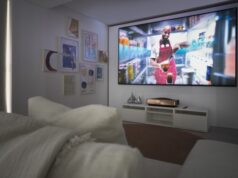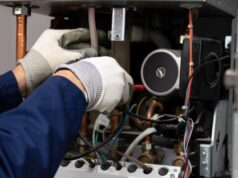
Setting up a set-top box (STB) is essential for accessing a wide array of digital content. Whether you’re upgrading your entertainment system or setting up a new one, connecting your STB to your TV is a straightforward process. This guide will walk you through the steps to ensure a seamless setup.
1. Choose the right connection method
Modern set-top boxes offer several connection options. The most common methods are:
- HDMI (High-Definition Multimedia Interface): This is the preferred connection for most users. HDMI supports both high-definition video and audio through a single cable, providing superior picture and sound quality.CitizenSide
- AV (Audio/Video) cables: For older TVs that lack HDMI ports, AV cables (comprising red, white, and yellow connectors) can be used. However, this method delivers standard-definition video and audio.
- Component cables: Some set-top boxes and TVs support component video connections, which offer better quality than AV cables but are less common in newer setups.
- Wi-Fi or Ethernet (for smart set-top boxes): If your set-top box supports streaming services, you’ll need to connect it to your home network via Wi-Fi or an Ethernet cable to access online content.
2. Connect the Set-Top Box to Your TV
Using HDMI:
- Power off both your TV and set-top box.
- Plug one end of the HDMI cable into the HDMI output port on your set-top box.
- Insert the other end into an available HDMI input port on your TV.
- Power on both devices.
- Select the corresponding HDMI input on your TV using the remote control.
Using AV Cables:
- Power off both your TV and set-top box.
- Connect the red, white and yellow AV cables from the set-top box to the matching colored ports on your TV.
- Power on both devices.
- Select the AV input on your TV using the remote control.
Using Component Cables:
- Power off both your TV and set-top box.
- Connect the component cables (typically red, green, and blue for video; red and white for audio) from the set-top box to the corresponding ports on your TV.
- Power on both devices.
- Select the component input on your TV using the remote control.
3. Connect to the Internet (for smart set-top boxes)
If your set-top box supports streaming services, you’ll need to connect it to your home network:
- Via Wi-Fi: Navigate to the network settings on your set-top box and select your Wi-Fi network. Enter the password to connect.
- Via Ethernet: Plug one end of an Ethernet cable into the Ethernet port on your set-top box and the other end into an available port on your router.
4. Complete the initial setup
Once your set-top box is connected:
- Follow the on-screen instructions to complete the initial setup. This may include selecting your language, setting up parental controls, and scanning for available channels.
- Install any available software updates to ensure your set-top box has the latest features and security patches.
5. Troubleshooting tips
If you encounter issues:
- No Signal: Ensure all cables are securely connected and that the correct input source is selected on your TV.
- Poor Picture or Sound Quality: Check the quality of your cables. For HDMI, ensure you’re using high-speed cables, especially if you’re streaming 4K content.
- Internet Connectivity Issues: Verify your network connection. If using Wi-Fi, ensure the signal strength is adequate. For Ethernet connections, check the cable and router settings.
6. Additional tips
- HDMI Ports: Some TVs have multiple HDMI ports. If you’re using a 4K set-top box, ensure it’s connected to an HDMI port that supports 4K resolution.
- Cable Quality: For optimal performance, especially with 4K content, use high-quality HDMI cables that support the necessary bandwidth.
- Software Updates: Regularly check for and install software updates on your set-top box to ensure optimal performance and access to the latest features.
By following these steps, you can successfully connect your set-top box to your TV and enjoy a wide range of digital content. If you continue to experience issues, consult the user manual for your specific set-top box model or contact customer support for assistance.





